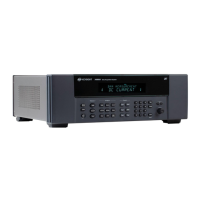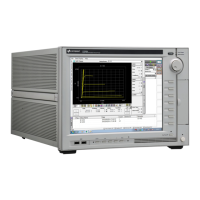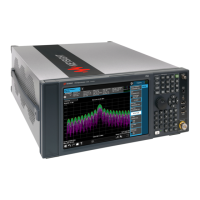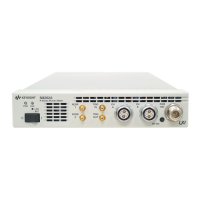42 Keysight 34921A-34925A User’s Guide
34924A 70-Channel Reed Multiplexer
The high-density 34924A 70-Channel Reed Multiplexer (70-Ch Reed MUX) is
divided into two banks with 35 non-latching reed switches (channels 1-35 and
36-70) in each. This module also contains eight armature Analog Bus relays
(channels 911-914 and 921-924), four on each bank that can connect the bank
relays to the system Analog Buses. Through ABus1 and ABus2 you can connect
any of the channels to the system DMM for voltage or resistance measurements.
See the simplified schematic on page 43.
Using program commands or the mainframe front panel, you can control each of
the channel switches individually, and thus configure the 34924A in any of these
modes:
– two independent 35-channel 2-wire MUXes. This configuration requires
neither using external wiring nor connecting through the internal Analog
Buses.
– one 70-channel, 2-wire MUX. You must use external wiring or connect through
the internal Analog Buses for this configuration.
– one 35-channel 4-wire MUX. This configuration requires neither using external
wiring nor connecting through the internal Analog Buses. For 4-wire resistance
measurements, the instrument automatically pairs channel n on Bank 1
(source) with channel n+35 on Bank 2 (sense) to provide these connections.
Four-wire controls occur only when doing 4-wire measurement operations
through the internal DMM, such as MEASure:FRESistance? or scanning a
channel previously configured as 4-wire.
In 2-wire mode, you can close no more than 20 channels simultaneously due to
power dissipation. These 20 channels are split 10 to a bank. However, note that
Analog Bus relays count half as much as channel relays in that total. For example,
with one Analog Bus relay closed, you can close up to a maximum of 19 channel
relays. If you try to close more than the allowed number of channels, you will
receive an error message.
In all modes, this module has capability to scan as many as 500 channels/second
using the internal DMM. With the automatic “break-before-make” connection
operation, you are assured that no two signals are connected to each other during
a scan.

